The team from Taiwan Tech has developed an ultra-fast micro-lens array manufacturing, moisture-absorbing power generation battery, and has won the National Science and Technology Council's Future Technology Award.
The winners of the prestigious "Future Technology Award," organized by the National Science and Technology Council and representing a key honor in Taiwan's academic and research community were recently announced. Among the recipients are Professor Pin-Chuan Chen, holding a distinguished position in the Department of Mechanical Engineering, and Professor Li-Hsien Yeh, from the Department of Chemical Engineering at Taiwan Tech, who were recognized for their pioneering research in the field.
Professor Pin-Chuan Chen shared insights into their awarded research endeavors. He highlighted the growing demand for smart manufacturing, optical communication, and applications in 3C products. Microlens arrays have emerged as high-potential precision optical components in recent years. However, a single microlens array can cost as much as 10,000 to 20,000 NT dollars. Traditionally, precision machining and photolithography were the primary manufacturing methods, facing challenges of high production costs and lengthy manufacturing times.
To address these challenges, Professor Pin-Chuan Chen and his team integrated digital grayscale and defocusing techniques into digital light processing (DLP) 3D printing technology. This integration significantly reduced the manufacturing time for a set of microlens arrays to just 10 minutes and cost approximately 100 NT dollars. In comparison to commercially available products, the printed products exhibited competitive resolution. Additionally, they offered greater design flexibility in numerical apertures and lens morphology, making them highly competitive in expanding the application range of microlens arrays.
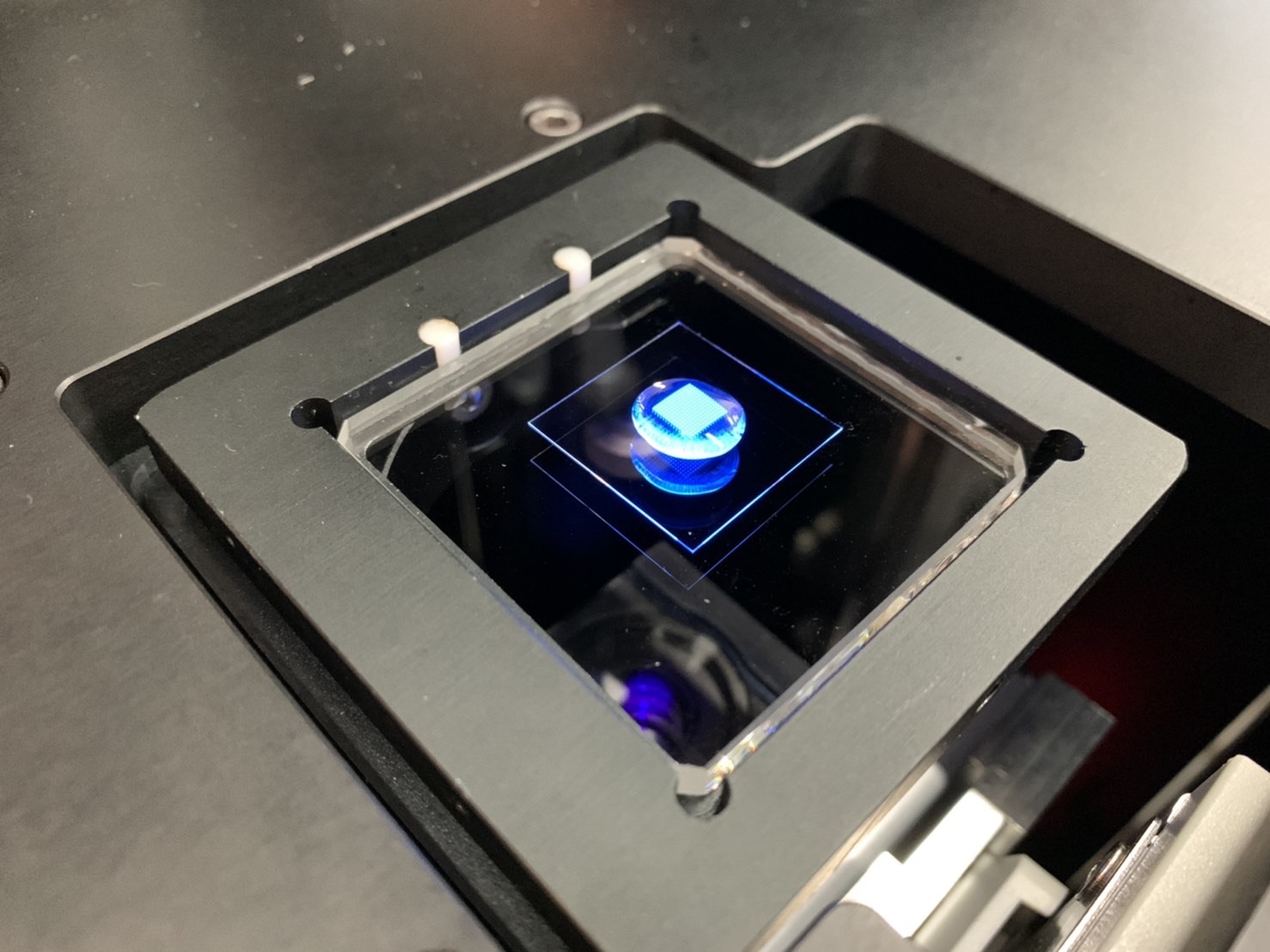
Professor Pin-Chuan Chen and his team have successfully combined digital grayscale, defocusing techniques, and photosensitive resin to create microlens arrays using digital light processing (DLP) 3D printing technology.
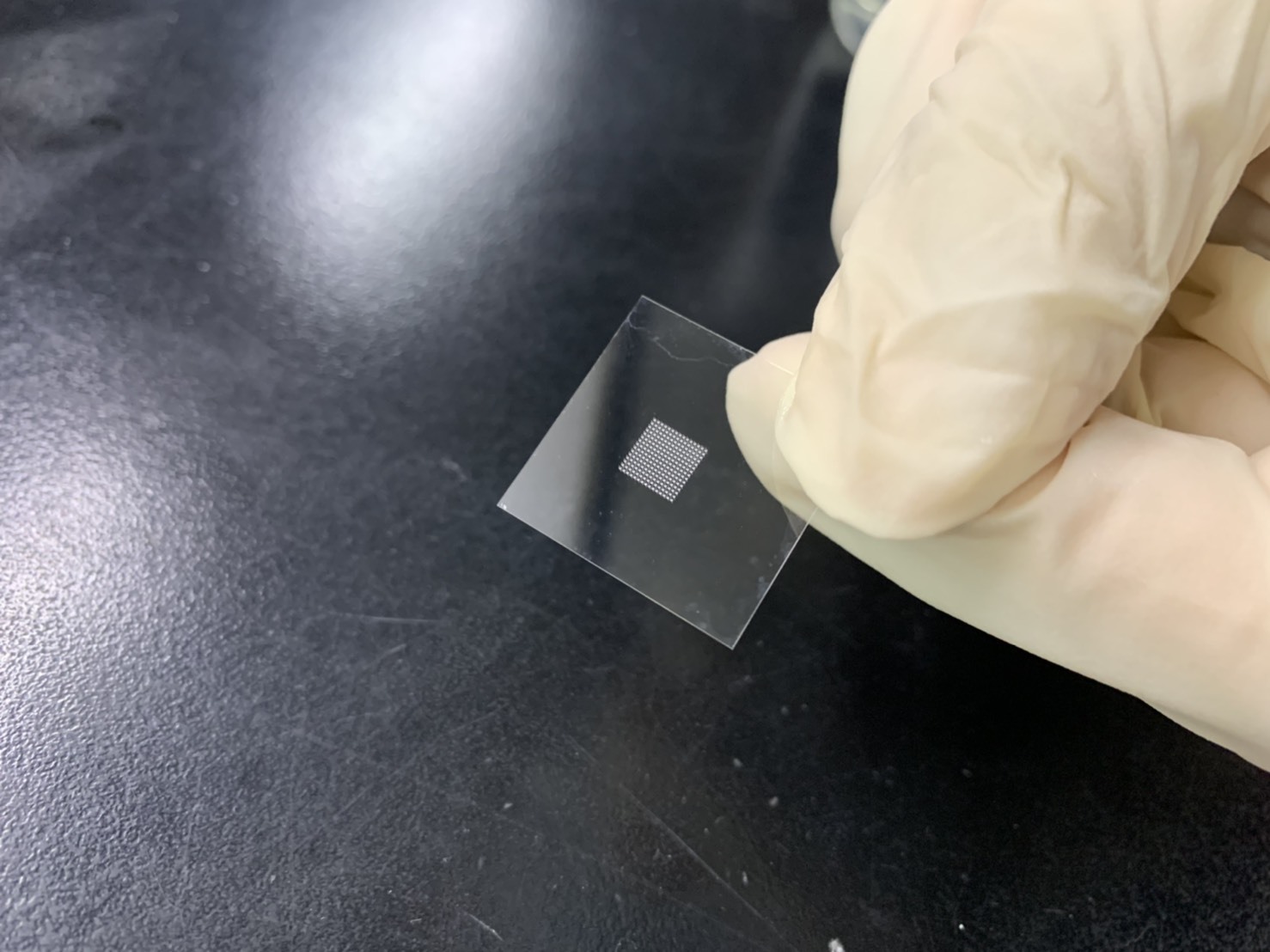
The microlens array was finished.
Acknowledging the six-year research and development journey, Professor Chen admits the numerous challenges and moments of self-doubt regarding the chosen research direction. However, drawing inspiration from international conferences and a plethora of scholarly literature, a semblance of the microlens array concept was finally realized three years ago. This journey involved countless iterations of material and parameter adjustments, culminating in the current state of a mature manufacturing technique for microlens arrays.
Expressing gratitude for receiving the Future Technology Award, Professor Pin-Chuan Chen extends appreciation to the National Science Council, the High-Speed 3D Printing Center at Taiwan Tech, and FreEntity Co., Ltd for their support in terms of funding and equipment. He also acknowledges the dedication of all the students involved in researching and developing microlens array technology. He emphasizes that the collective effort of everyone involved was instrumental in bringing the technology to its current stage. Professor Chen also discloses that the technology has been integrated with AI to aid in designing microlens arrays, assisting users in quickly designing intricate microlens array patterns that align with optical paths. Looking ahead, he hopes to collaborate with industry partners to seamlessly integrate and apply this technology in practical industrial settings. He expresses contentment with the idea of this technology becoming a small yet significant component in Taiwan's precision manufacturing industry, stating, "As long as it can be a small screw in Taiwan's precision manufacturing industry, I would be completely satisfied."

Professor Pin-Chuan Chen, leading the team from Taiwan Tech, achieved the esteemed 2023 Future Technology Award. In the image, Professor Pin-Chuan Chen is positioned on the right while Chih-Yu Hsieh is on the left.
On the other hand, Professor Li-Hsien Yeh was acknowledged with the Future Technology Award for his pioneering work on the "Paper-Based Environmental Moisture Absorbing Power Generating Battery." This innovative battery represents a groundbreaking advancement in Taiwan, being the first battery capable of generating electricity by spontaneously capturing water molecules from the air. The device operates by utilizing a hydrophilic paper fiber substrate in conjunction with two-dimensional conductive materials and organic metal frameworks (MOF). This setup allows the automatic absorption of moisture from the air and through capillary pressure and evaporation phenomena, drives the movement of water molecules and ions to generate electrical energy. The resulting technology offers a clean, green energy solution that is lightweight, cost-effective, durable, and reusable. It liberates itself from the constraints of bulky and expensive green energy equipment such as solar and wind power generation.
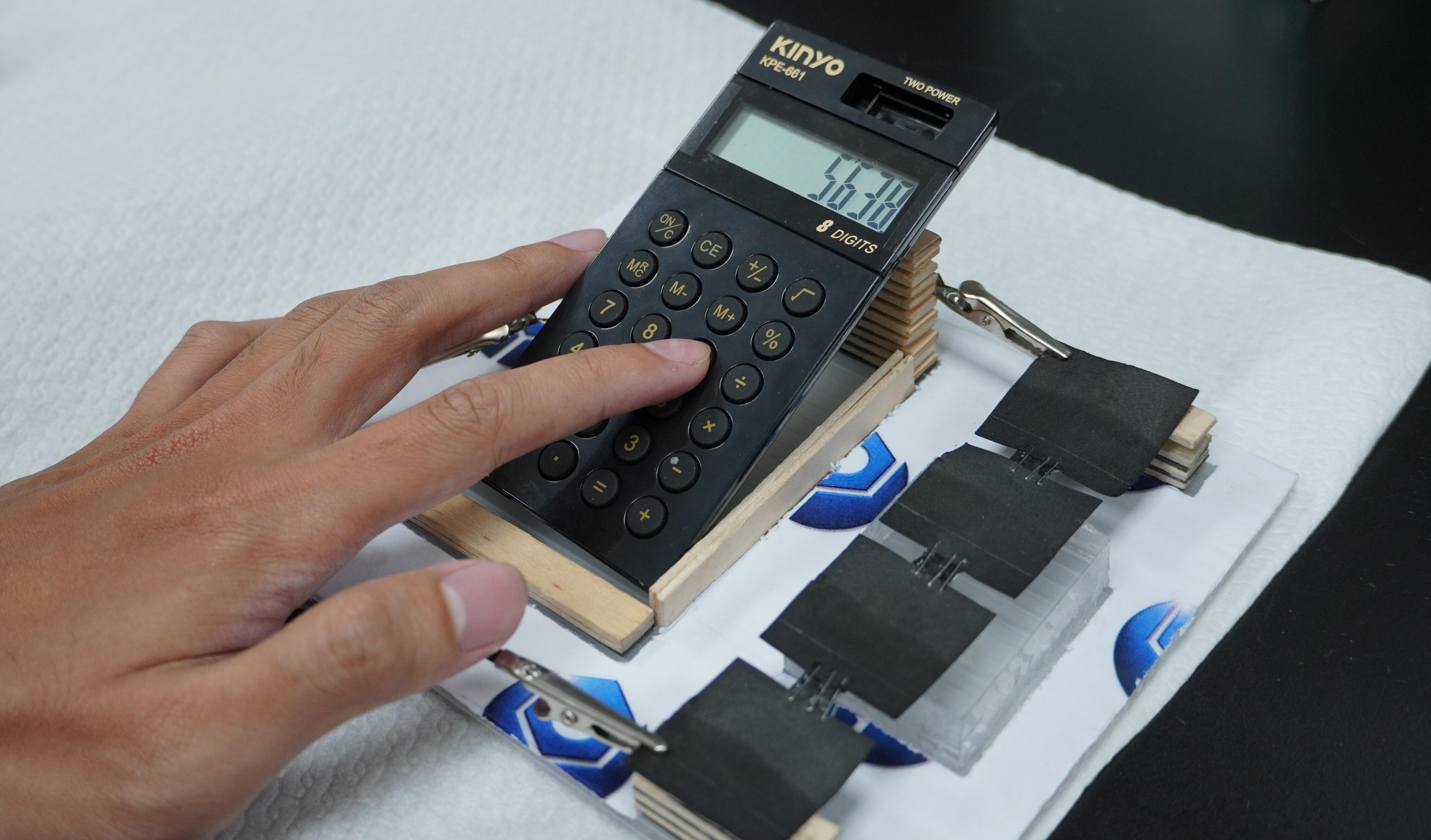
The "Paper-Based Environmental Moisture Absorbing Power Generating Battery" features an exceptionally compact overall design, with a single thin film weighing less than 0.05 grams. It autonomously generates electrical energy by absorbing moisture from the surrounding air.
The research team is currently integrating this moisture-absorbing power-generating battery into engineering computers, wristwatches, LEDs, and other applications. Professor Li-Hsien Yeh emphasized the need to explore new sustainable and clean energy sources. The moisture-absorbing power-generating battery offers an innovative and sustainable energy option for various industries. The team is committed to enhancing power generation efficiency further and actively seeks industry-academic collaborations to realize the practical implementation of this concept in products and industries.
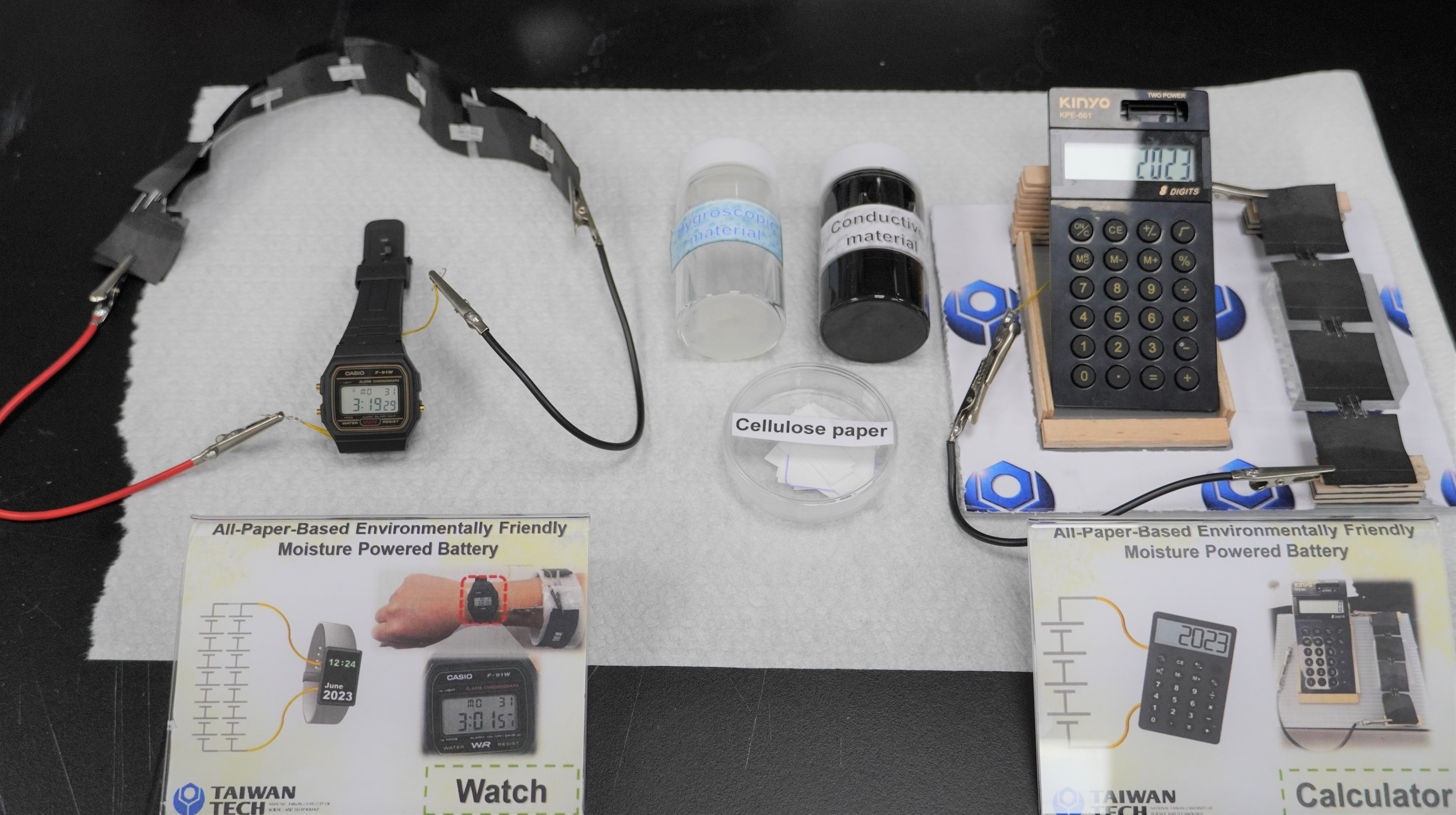
The "Paper-Based Environmental Moisture Absorbing Power Generating Battery" demonstrates the capability to power common electronic devices such as electronic calculators and wristwatches.
Professor Li-Hsien Yeh enthusiastically encourages students to engage in various competitions, asserting that the feeling of being acknowledged is a crucial source of student advancement. He views this engagement as a positive cycle, enabling students to identify their strengths and weaknesses through competitive experiences, thus continuously improving and garnering encouragement during the refinement process.
A member of the research team and a student pursuing a degree in chemical engineering, Song-Hao Ma, emphasized the significance of competition participation in accumulating valuable experiences. It also provides opportunities to draw inspiration and insights from other teams' research, proving immensely beneficial for future research endeavors and job applications. Team leader Qi-Han Bai added that despite encountering numerous failures during this journey, "research is about trial and error." He emphasized that it's essential not to be disheartened by failures and encouraged fellow students to rise and continue on the right path with determination.
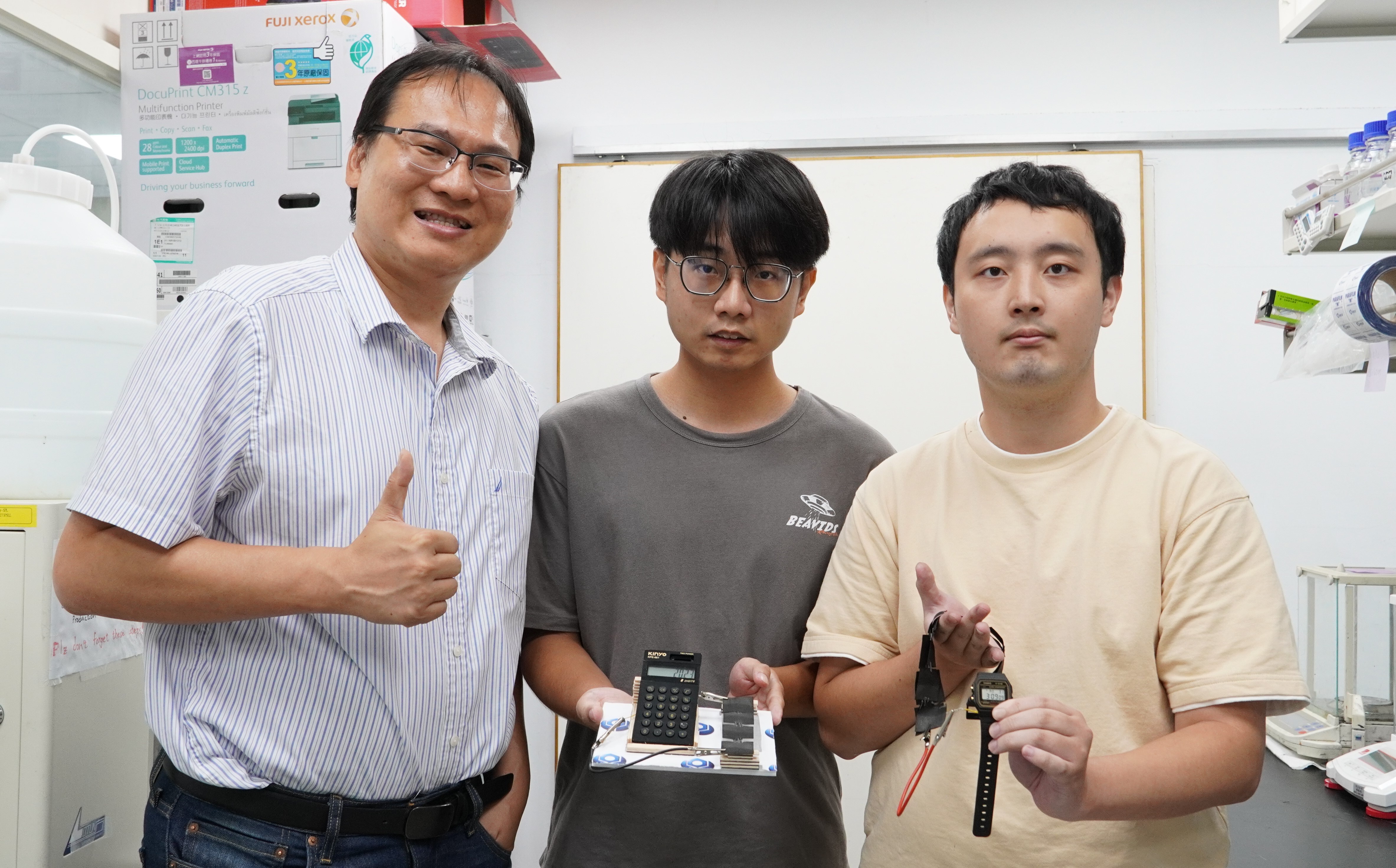
Professor Li-Hsien Yeh, leading the Taiwan Tech team, has received recognition with the 2023 Future Technology Award. Professor Li-Hsien Yeh, Song-Hao Ma, and Qi-Han Bai are pictured from left to right.
The Future Technology Award, now in its seventh year, is a collaborative effort supported by the National Science and Technology Council, Academia Sinica, the Ministry of Education, and the Ministry of Health and Welfare. This year witnessed a total of over 500 entries across four major domains: "Net Zero Technology," "AIoT Smart Applications," "Biomedical New Drugs and Medical Materials," and "Humanities and Technology." These entries demonstrated innovation, prospective value, and international market potential. Among them, 80 outstanding works were selected as award recipients and finalists.
The award-winning and shortlisted technologies will be showcased physically from October 12 to October 14 at the Future Technology Pavilion during the Taiwan Innovation Technology Expo.
These exceptional technologies, recognized and shortlisted for their remarkable contributions, will be presented physically from October 12 to October 14 at the Future Technology Pavilion during the Taiwan Innovation Technology Expo.
